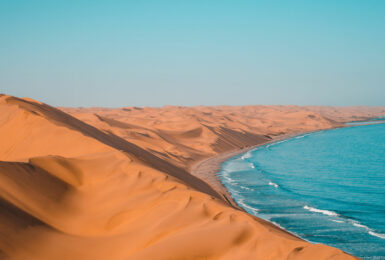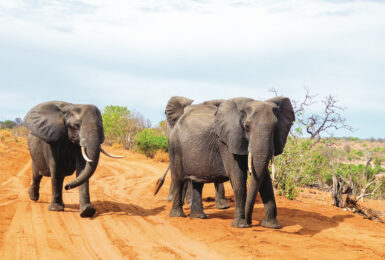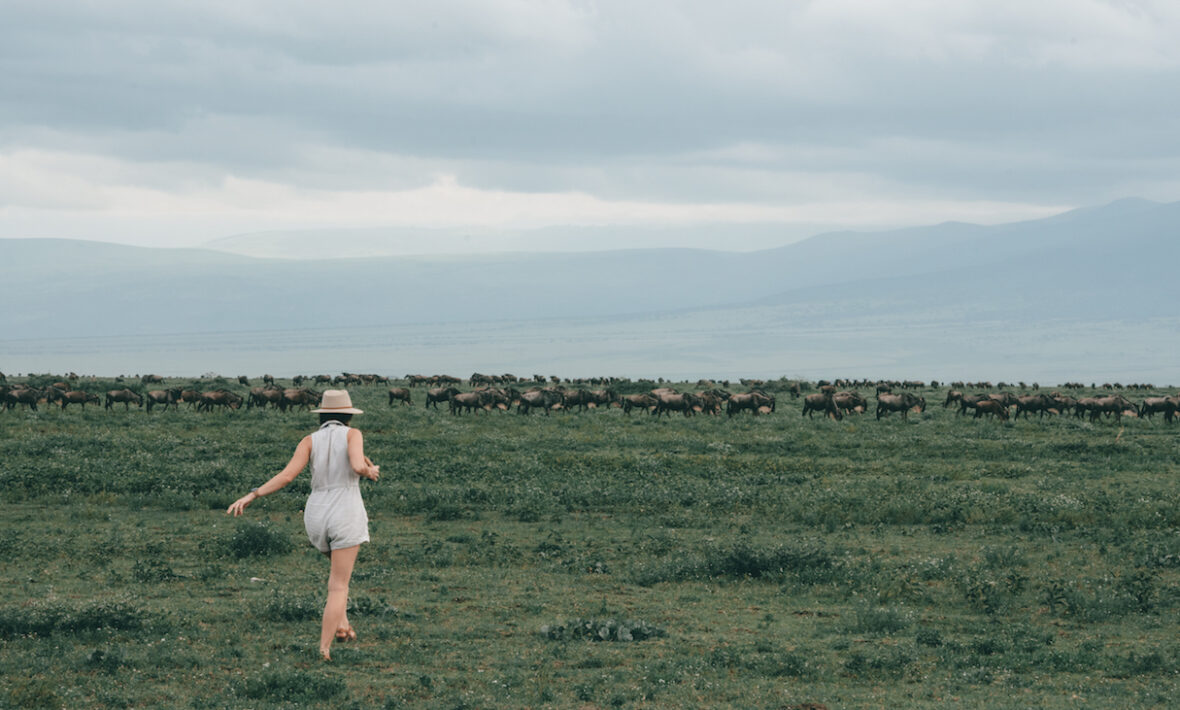 Photo: Nadine Sykora
Photo: Nadine Sykora
For World Wildlife Day, we collaborated with the TreadRight Foundation and YouTuber and full-time traveller Nadine Sykora (@heynadine) to find out why East Africa’s wildlife migration numbers are falling and what we can do to help. On the 12-day Kenya and Tanzania Safari, Nadine interviewed wildlife experts and traversed the beautiful national parks across Kenya and Tanzania to better understand the threat to local wildlife and investigate why the Great Migration is changing.
Here, we catch up with Nadine to hear all about her adventure through Kenya and Tanzania and discuss the importance of animal protection and conservation. ‘Wildlife’ is also one of the three pillars of MAKE TRAVEL MATTER™, powered by TreadRight. It’s our commitment to support and educate on ethical animal experiences and protect the world’s most at risk wildlife.
Read on to learn about the issues threatening East Africa’s wildlife and how you can make your travel matter…
How did you get started as a travel vlogger?
Hi! I’m Nadine Sykora, a Canadian YouTuber travelling the world and sharing my experiences through my videos and on Instagram. I started posting on YouTube in 2007 but quickly realized my passion for travel. In 2010, I became a full-time travel vlogger. I love inspiring others to fulfill their travel dreams as well as travel more consciously, so I’m so proud to be investigating the threats to East Africa’s wildlife with Contiki’s Travel Project.
View this post on Instagram
You experienced Contiki’s East Africa Safari, what made that itinerary stand out to you?
I absolutely loved the opportunity to stay right in the actual parks! It’s a really unique experience, especially at night. It was surreal hearing the hyenas and waking up to elephants having a morning graze right outside your camp. The camping was amazing, with beds and bathrooms instead of tents on the ground. We definitely weren’t in Canada anymore!
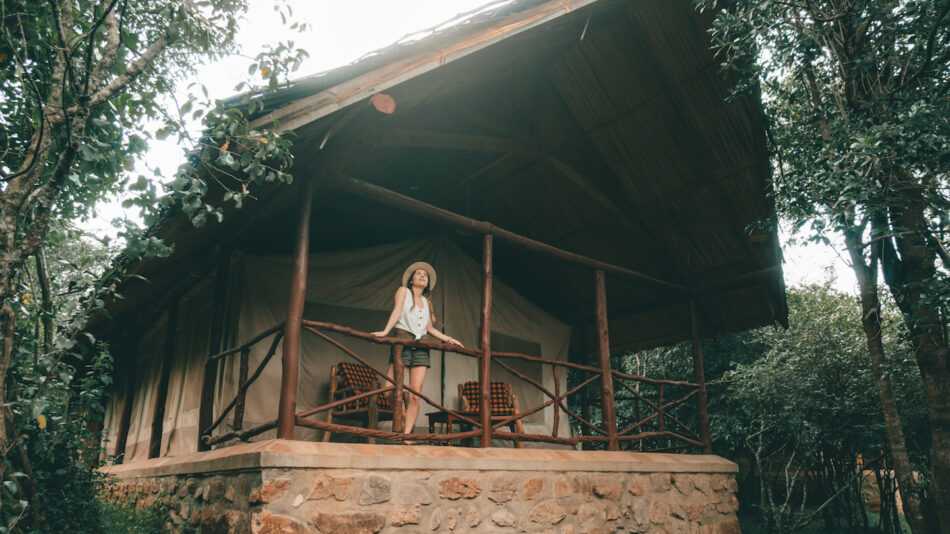
Image source:Nadine Sykora
Which was your favourite wildlife encounter?
Definitely the opportunity to see all these animals in their natural habitat. There are no cages, no barriers and really no boundaries for them in the wild. Every single day on each game drive we’d spot something new and it was always a surprise.
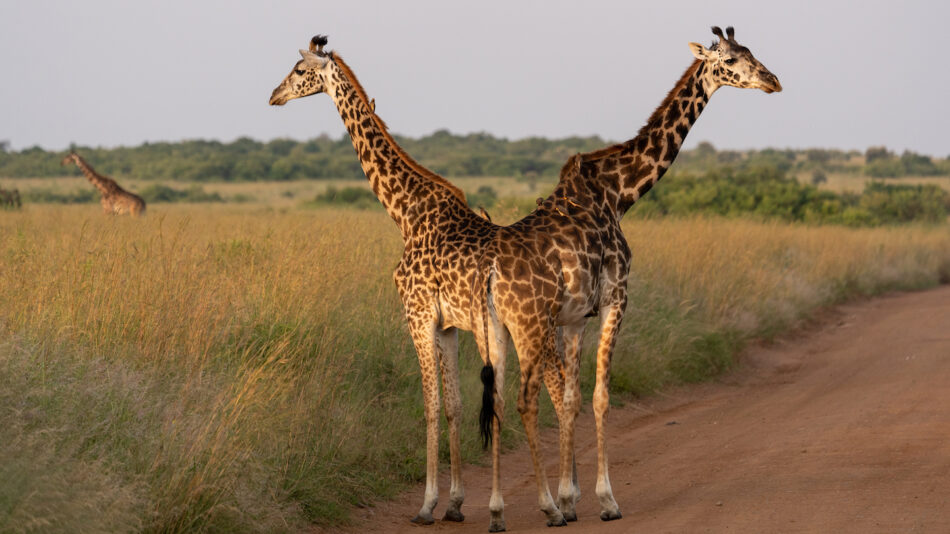
Image source:Nadine Sykora
So, what exactly is The Great Migration?
The Great Migration is one of the world’s greatest natural spectacles! This is when thousands of wildebeest, zebra and gazelle make their 1,800 mile trek (usually starting around July-August) from The Serengeti National Park in Tanzania to the Maasai Mara National in Kenya. However, the number of migrating animals (particularly wildebeest, gazelle and zebra) across East Africa is declining year on year. It has been reported that wildlife numbers in Kenya fell by 68% across the 40 years from 1977-2016.
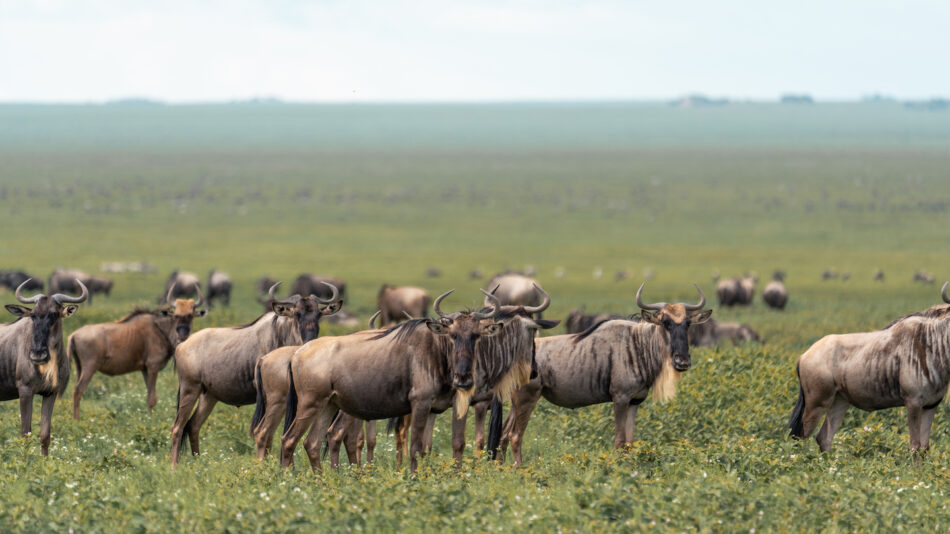
Image source:Nadine Sykora
What were your key learnings about East Africa’s wildlife and the Great Migration?
There were two major takeaways that came through when talking to the experts, local guides and conservationists. The change in weather due to climate change and urbanization combined with human-wildlife conflict are the biggest threats to East Africa’s wildlife population.
1. Climate change
Climate change is altering the rainy season, which is one of the reasons the animals migrate to Kenya. During rainy season everything is lush and green so they have access to plenty of food and water. When it gets dry, they migrate to follow the rains. Now there’s rain everywhere, so the need to migrate isn’t as urgent.
Two of the local guides I spoke with, JB and Haron, explained they can’t give definitive numbers to show the decrease in migration. But, they definitely have recognized the animals’ patterns are changing. Instead of travelling all together, herds are splitting up to travel in search of food and water. JB also clarified that even though their patterns are now less predictable, they know the migration will continue to happen! It’s the animals’ natural instinct. They’re driven to migrate for food, water and finding a safe space to give birth, but it’s also engrained in them and it’s what they’re used to doing.
2. Urbanization and human-wildlife conflict
Urbanization and human-wildlife conflict are also posing a threat to the wildlife here. As communities and cities grow, they’re taking over the animals’ natural habitats, which leads to more conflict between the humans and wildlife. Locals may have problems with animals and their livestock, or they pose threats to the humans, and if people aren’t properly educated on how to manage this, their instinct is to harm the animals for their own protection.
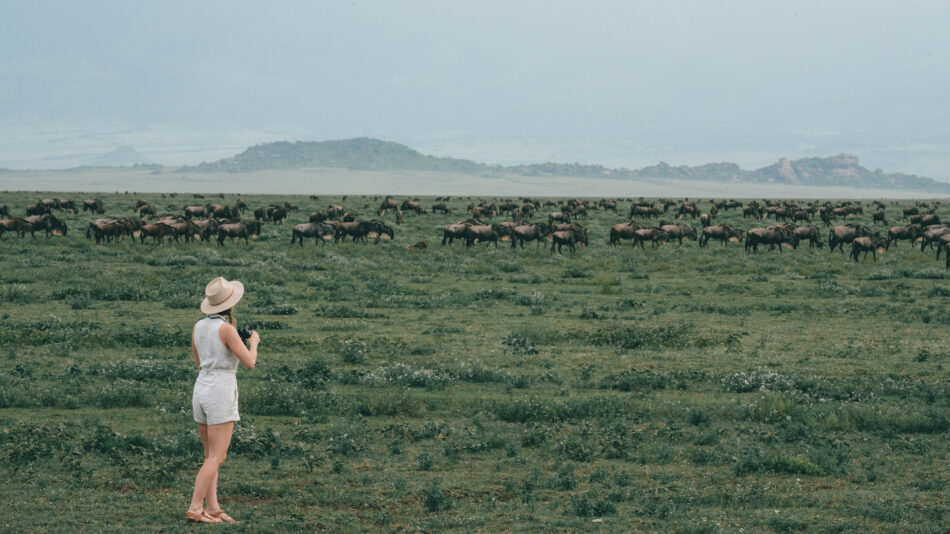
Image source:Nadine Sykora
Who were some of the most memorable people you spoke to on your East Africa Safari trip?
Both of our Contiki guides were awesome! JB and Haron were so full of knowledge and since they’re both locals, they had tons of insider insights to share with us. I also had the opportunity to visit a local Maasai village and chat with the inspirational village leader. He shared how the Maasai tribe are changing their approach to local wildlife and highlighted the importance of education. Since a lot of their typical lands are shared with animal lands and wildlife parks, wild animals are known to threaten their cows and sheep.
The community used to instinctively kill the animals – whether lions, buffalos or other wildlife – but now they’ve learned about the importance of conserving these special species. Before, they never saw the animals as something that should be protected, they saw them as predators. But they’re not just educating their own tribe. Many of the tribe leaders are coming together to teach other tribes about the different, more responsible ways to deal with the animals. Through the sharing of knowledge between tribe leaders and government programs, they use different tactics now, like scaring the wildlife away.
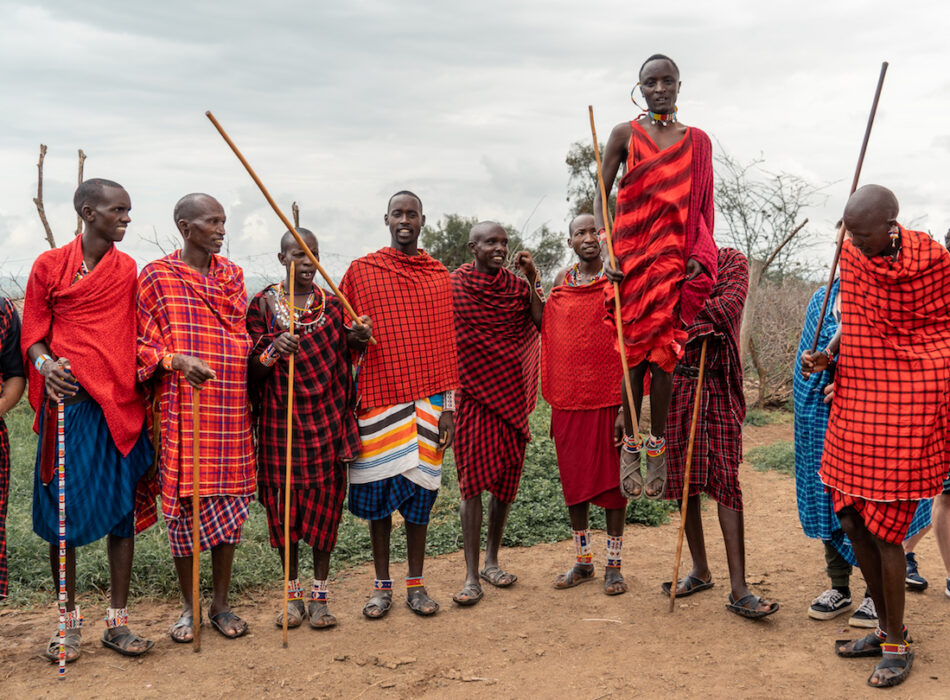
Image source:Nadine Sykora
How can travellers do their part to support wildlife globally?
1. Choose to travel with responsible companies
Opt for a travel company that holds animal welfare as a top priority and chooses non-harmful, ethical activities. On our game drives with Contiki the guides always emphasized that we’re in the animal’s habitat. We’re the guests, so we always respected their space. The guides ensured we didn’t get too close to them, unless they came up to us, and we were taught not to disrupt them.
2. Visit wildlife in their natural habitat
Visiting these animals in their natural location supports wildlife, since tourism generates more money for their protection. Contributing to the local economy increases the value in conserving the wildlife versus expanding communities into their land.
3. Raise awareness and share your knowledge
Preserving the animals habitat is crucial, but many people just don’t know how serious the threat is. Especially in Tanzania, tourism is its biggest economic contributor. The country realizes people come from around the world for its natural beauty and discovering its wildlife is a huge factor. We can help by sharing the knowledge and urgency about animal and land conservation, as this results in the country choosing more sustainable ways of commercializing what they have. The goal isn’t to limit the country’s economic growth.
By showing our commitment to experiencing wildlife in an ethical way, this makes protecting them and the open spaces they need to roam, eat and live on more valuable.

Image source:Nadine Sykora
What are your top must-pack items for this trip?
1. Binoculars. Even if you don’t have a camera, you can still see the animals from far away.
2. Something warm. A warm sweater or jacket! Pack warmer than you think because the game drives happen during early mornings and evenings, when the temperature can drop.
3. A love of animals! This trip is different to any other Contiki because the focus really is on the game drives; the amazing wildlife and jaw-dropping landscapes you’ll see.
View this post on Instagram
Contiki supports projects that safeguard wildlife for future generations, how did you find Contiki upheld this value?
By being respectful of the animals and staying true to its welfare policy. Our guides spent a lot of time educating us. Even all the places we stayed were really cool and respectful. We had animals walking through our camp, but the goal was to let the animals do their thing around us. It really makes a difference having the accommodation employ only people who also respect the wildlife.
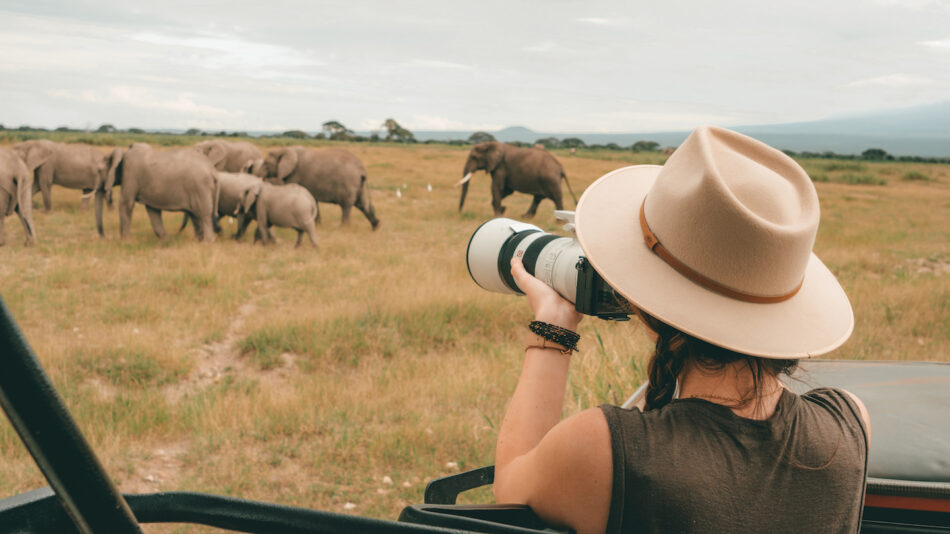
Image source:Nadine Sykora










